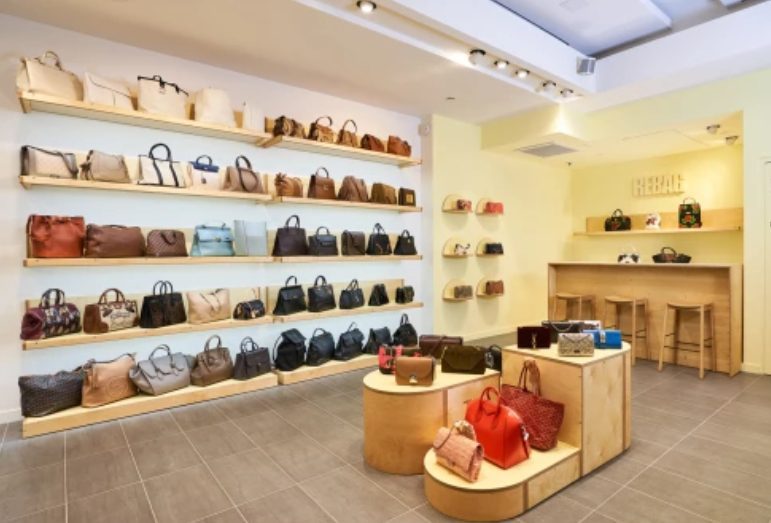The concepts of luxury retailing and resale don’t traditionally go hand in hand. Luxury is often defined by a sense of exclusivity and brand equity that attracts a more affluent crowd, while resale has been seen as “the masses” seeking out random merchandise at a low price. But it appears that the two worlds are intersecting more than one would think: the second-hand luxury market is expected to grow to nearly 9% of all luxury sales by 2020, according to data from Berenberg.
The U.S. luxury resale market totaled $6 billion in 2018, according to Bain & Co. Pricing definitely has influenced this market’s growth; secondary market items typically sell anywhere for 30% to 90% less than the retail price of similar new items. As the market continues to grow, the time is now for luxury brands to decide whether they should scale up their own resale strategy, especially given that:
- Second-hand sales can support demand for first-hand products in the long term;
- More top competitors, such as Neiman Marcus, Farfetch and Richemont, are jumping on to the resale bandwagon; and
- Entry into luxury resale can be challenging and require careful planning, especially if retailers aren’t prepared for the random nature of merchandising required by the model or handle its product authenticity concerns.
Secondary Market Supports Buying Power, Demand For Luxury Goods
The 2019 CB Insights Luxury Trends report highlights resale as a “necessary” trend that luxury companies should focus on if they don’t want to fall out of fashion. In particular, the study highlights two benefits directly related to first-hand product sales: increasing buying power for first-hand sales and supporting demand for first-hand goods.
Advertisement
“Luxury shoppers selling their used luxury goods get more money to spend on first-hand goods,” the report noted. “A well-managed second-hand market could boost demand for first-hand items. The demand and price of a pre-owned Hermès Birkin bag has skyrocketed over the past 35 years, generating an annual return of 14.2%, according to Baghunter. This is comforting potential buyers about the value of their purchase, thus boosting sales of first-hand bags.”
Retailers And Brands Both Enter Resale As Anticipated Market Growth Reaches $23 Billion
Major luxury companies such as Richemont and Farfetch have entered the market by acquiring resale platforms of their own — Watchfinder and Stadium Goods, respectively. Additionally, the popularity of online businesses such as The RealReal, Vestiaire Collective and Rebag have led the way for more retailers and brands to enter the resale market.
The resale market boasts enticing stats: 26% of luxury shoppers buy secondhand products, ahead of department store shoppers (25%) and value chain shoppers (22%), according to the thredUP 2019 Resale Report. The overall resale market has grown 21X faster than the retail apparel market over the past three years and is expected to reach $23 billion by 2023 ($51 billion when accounting for thrift stores and donations), the report said.
“It’s a completely different customer mindset than 15 years ago,” said Lee Peterson, EVP of Thought Leadership and Marketing at WD Partners in an interview with Retail TouchPoints. “The ‘uniforms’ of the ‘90s — the Abercrombies, the Gaps, American Eagle — you can go into those stores and buy an entire outfit. That whole aspect of fashion is gone. In its place is a ‘mix and match’ scenario where one piece goes with the other, or plaid goes with stripe.”
Rati Levesque, Chief Merchant of The RealReal, said that her company sees that today’s consumers shopping retail want to know the resale value of particular designers and items before they make a first-hand purchase.
“They make purchases now knowing they will eventually consign it and make a significant portion back on the original cost — it’s an investment,” said Levesque in an interview with Retail TouchPoints. “Our job is to educate the consignor on what brands hold resale value and what does not (which can shift from season to season or year to year), so they are informed when shopping brands in the primary market. It’s the new luxury lifecycle.”
Despite Market Growth, Luxury Resale Still Must Solve Authenticity, Merchandising Concerns
But unlike the rest of the resale apparel market, which has thrived off the uncertainty of the “treasure hunt,” luxury retailers trying to enter resale have to deal with bigger challenges, including product authenticity and consistent merchandising.
The luxury-resale combination has not been smooth for everyone, with Chanel recently filing a lawsuit against The RealReal, claiming that the online platform was selling counterfeit handbags. With Chanel alleging that the company’s staff isn’t properly qualified to authenticate its products, the question of whether luxury retailers have faith in the resale system remains open.
The random nature of merchandising and inventory acquisition in a resale environment can be far more difficult for a luxury retailer to handle than it is for other fashion and apparel retailers that can afford to be less picky. The situation is made even more complex because established luxury resellers are generally more willing to take in products of varying quality.
“The used business isn’t the same logistics at all, or the same mentality,” Peterson said. “Somebody walks in the door with an old jacket and asks: ‘Is anyone interested in buying this and putting it on your rack?’ If it has holes in it, you might not want that, but she can then walk over to one of the consignment retailers and they’ll take it instead. You don’t know who’s going to come in, you’re often going to get pieces and odds and ends. You get more on certain days than others. All of a sudden, you’ll have the really terrific days where sellers come in and you buy a ton of it.”
Additionally, paying a shopper on the spot for used items can turn into a competition of its own, a kind of inverse of pricing’s “race to the bottom.” A consignment retailer’s business model is built on giving shoppers the most money for their merchandise return, so a luxury retailer is likely to have difficulty justifying matching, or even exceeding, said price.
Peterson noted that to make this model work under their own umbrella, luxury retailers would likely have to dedicate a separate unit to used merchandise. “You could say, ‘Come to this location and bring all your used merchandise here.’ You could staff it correctly and figure out how to merchandise these goods more effectively, apart from the items sold in regular stores and online. Then you have to start advertising, and hype the fact that you’re going to pay a premium for their goods.”
Neiman Marcus Will Be Test For Major Luxury Retailers Approaching Resale
Neiman Marcus is perhaps the biggest U.S. luxury retailer that has made a direct investment in resale, recently acquiring a minority stake in Fashionphile, a pre-owned luxury handbag and accessory retailer. As part of the investment, Neiman Marcuswill create space for Fashionphile at some of its stores, where shoppers can drop off items, get an immediate quote on their value and get paid.
While Neiman Marcus is looking for a spark of its own, with Q3 same store sales expected to decline between 1.3% and 1.9%, the retailer’s decision to hop on the resale bandwagon shows that it is not limiting itself on what kinds of products it’s offering consumers. At the same time, other top luxury retailers seeking to jump into the resale business would be wise to keep a close eye on the results from the partnership.
In a RetailWire discussion, Steven Dennis, President of SageBerry Consulting, noted that while no brand can control the evolution of the resale market, companies that don’t participate in it risk falling behind competitors.
“When I was at Sears, I can’t tell you how many times we failed to place meaningful bets in key categories for fear of cannibalization or diversion from our core business,” Dennis said “Along the way the amount of share and market value that was ceded to Home Depot, Lowe’s and Best Buy (among others) was, as everyone knows by now, massive and will ultimately prove fatal. Whether Fashionphile is the right horse to ride, I don’t know. But re-commerce is becoming an important market and Neiman Marcus would be stupid not to experiment with it.”









